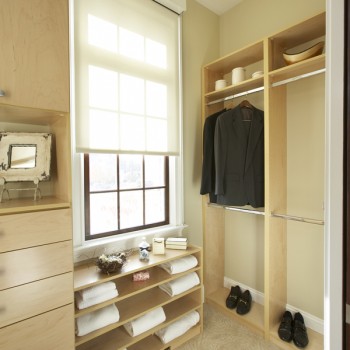The History of MDF: Where It Came From and How It’s Made
- July 8, 2019
- •
- by Columbia Forest Products
Medium-density fiberboard (or MDF) is a type of composite wood panel that woodworkers, builders, DIYers and architects have been using for decades.
It’s found in cabinetry, furniture design and decorative trim across the world. But you might not realize that the ancestor of MDF was first “discovered” through a laboratory glitch.
A Happy Accident and A Sustainable Solution
In 1925, William Mason, an inventor and friend of Thomas Edison, made it his mission to find a use for the huge amount of leftover wood chips and shavings that lumber mills discarded. But when he forgot to shut down his equipment one evening, his machinery continued working, turning the wood chips into a thin, durable sheet.
He wound up patenting his method for compressed fiberboard, or hardboard, which applied pressure and heat to wood particles and resin, resulting in a thin, but highly durable, sheet of wood.
Manufacturers have evolved Mason’s method for nearly 100 years now to create this sustainable, strong and versatile product. Mass production of MDF as we know it today started in the 1980s, and we continue to find ways to use these panels to create all sorts of designs today.
The Basics: Manufacturing MDF
Wood chips and sawdust are the basic materials that are compressed to make MDF panels. Some manufacturers even include waste paper (like expired telephone directories from their local community), which helps to dispose of additional waste materials.
These fiber inputs are cleaned and processed to remove any impurities, then refined further so that all of the particles are small and consistent. MDF products are processed with a resin (often, formaldehyde-based), which bonds the fiber particles when they’re compressed.
This results in sheets of thin, strong wood.
MDF can be directly-coated in a wide variety of colors or patterns. It’s often clad with thin hardwood face veneers, and you can even have vinyl or leather applied to the surface of an MDF panel.
Refining the Process of MDF
Over time, attention has focused on building with “healthier” indoor air quality in mind, and the construction industry began seeking options for affordable, durable wood panels that didn’t use formaldehyde-based components.
There are now other resin systems available for MDF production, and some manufacturers now offer no-added formaldehyde (NAF) MDF for customers who want to minimize their exposure to the potential volatile organic compounds (VOCs) that can “off-gas” out of wood panels into the breathable air.
The Benefits of Using MDF
Builders and homeowners love using MDF because it’s durable and highly cost-effective. It’s also a solution for a wide range of applications, from doors to storage cabinets, molding and trim.

MDF offers great stability, even when there are significant changes in temperature or humidity. MDF is well known for its void-free surface, and it works well with veneer faces or paint applications. If you’re looking for tips on where to use MDF in your project, you can check out some ideas here.
Building With MDF Today
There are plenty of solutions that MDF offers. If you’re looking for a versatile and budget-friendly product to work with, consider using MDF panels to support your design.
There are a few things to remember when designing or working with MDF:
Experiment with it!
MDF is a great material to work with when you’re just trying out a design or need a mock-up for a client.
Wear your gear.
MDF is great for trim and carves very well with a router, but it can produce quite a bit of sawdust. Remember to wear respiratory and protective eye gear while you work with it and, if possible, cut it outside.
Use the right tools.
MDF is dense, and it holds screws better than other wood products. You might need a nail gun when you’re nailing, to make sure you’re piercing through the wood.
This product is heavy!
You can buy MDF in half sheets, but take caution when carrying MDF panels around.
MDF panels have been a building solution for decades now. We look forward to seeing even more projects and designs come to life by using this strong, high-utility wood product.
Check out some of our favorite projects here to inspire your next design.





